Art Fairs
With a Weakened Yen, the Second Tokyo Gendai Attracted a Larger International Crowd
Sales benefited from confidence in the local market and the international appeal of Japan as a tourist destination.
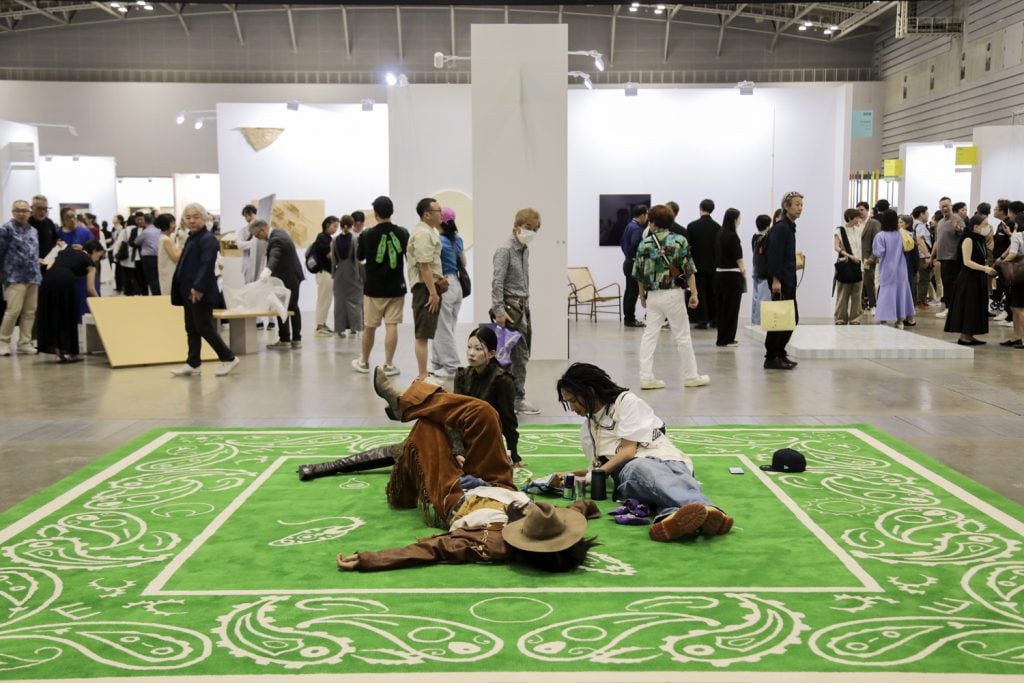
Sales benefited from confidence in the local market and the international appeal of Japan as a tourist destination.

Cathy Fan

For first-time visitors to the Tokyo art scene, the experience may not be as overwhelming or “lost in translation” as they had imagined. Instead, those comparing notes with Basel last month may be surprised to learn that the calm atmosphere and Japanese orderliness might even surpass Swiss punctuality.
Cultural habits aside, contrasting a nascent regional fair with the international standard bearer of the genre might be going a touch too far. On July 4, the second edition of Tokyo Gendai returned to the Pacifico convention center in Yokohama, a port city about an hour’s drive from central Tokyo. The fair’s inaugural edition in 2023 received quite positive reviews, and was described as “promising.” As with all major art events, the first year is often seen as a trial run to pique curiosity, while the second year faces the true test of answering tougher questions around artistic quality and commercial viability, especially relevant amid the continued weakness of the Japanese yen. The key question is whether local purchasing power and overseas sales will hold up.
Two days before its opening, international visitors—particularly from Europe and the United States—began arriving in Tokyo, trying to acclimate to the local art scene before jet lag set in. The gallery night on July 2 took place around two central gallery nodes, Piramide and Complex 665.
While the Japanese are culturally more low-key and polite than the American or European art going public, this should not be mistaken for low energy. “It’s a very different vibe from the recently concluded Art Basel,” remarked a local Japanese attendee to a foreign visitor. “I can sense the excitement among the Japanese crowd, which is expressed in a very subtle and quiet manner.”
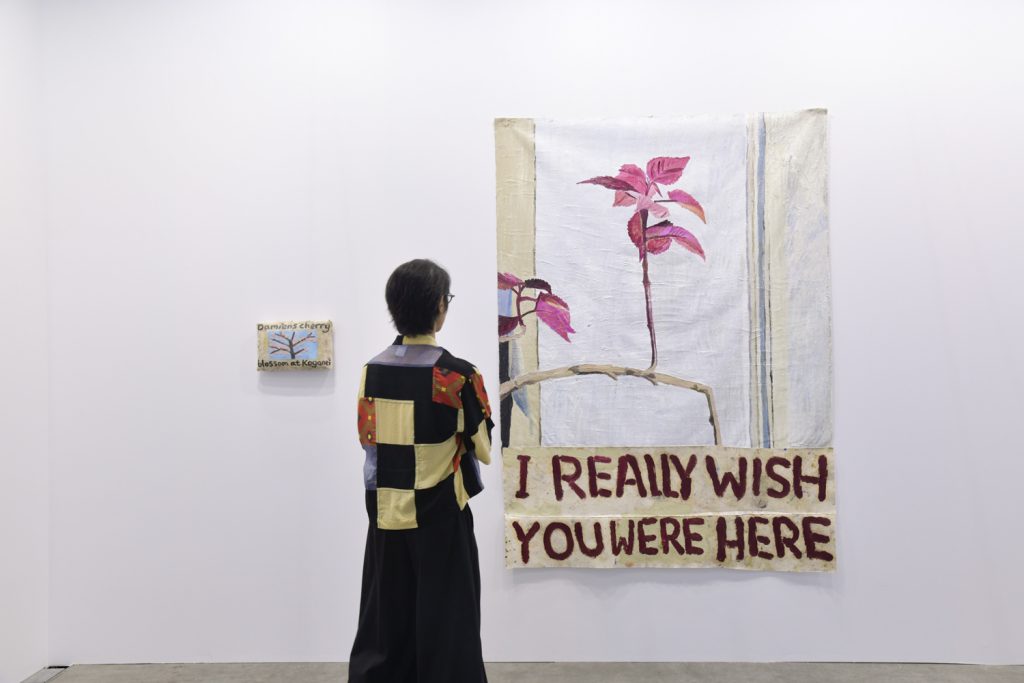
Sophie Barber, Wolfgang and i wish you were here (2024). Courtesy of Alison Jacques from Hana “Flower” at Tokyo Gendai.
This excitement extended into the fair on its opening day, where by 2 p.m. a long, orderly queue had formed at the entrance.
There was a noticeable increase in international visitors this year, with heavyweight projects from Western blue-chip galleries like Pace, which announced its long-awaited Tokyo space this summer, and Perrotin, opening its Salon space this July. A more active presence of young Japanese collectors added to the renewed sense of optimism.
“I think it’s probably evolution rather than revolution,” said Magnus Renfrew, co-founder of Tokyo Gendai, from his office overlooking the fair. This year’s fair featured 69 galleries from 18 countries and regions, four fewer than the previous year. Renfrew believes this is the most manageable and comfortable size for a fair. While 32 galleries from the inaugural fair did not return, it did well to attract 29 new members, keeping the total number of participants relatively stable.
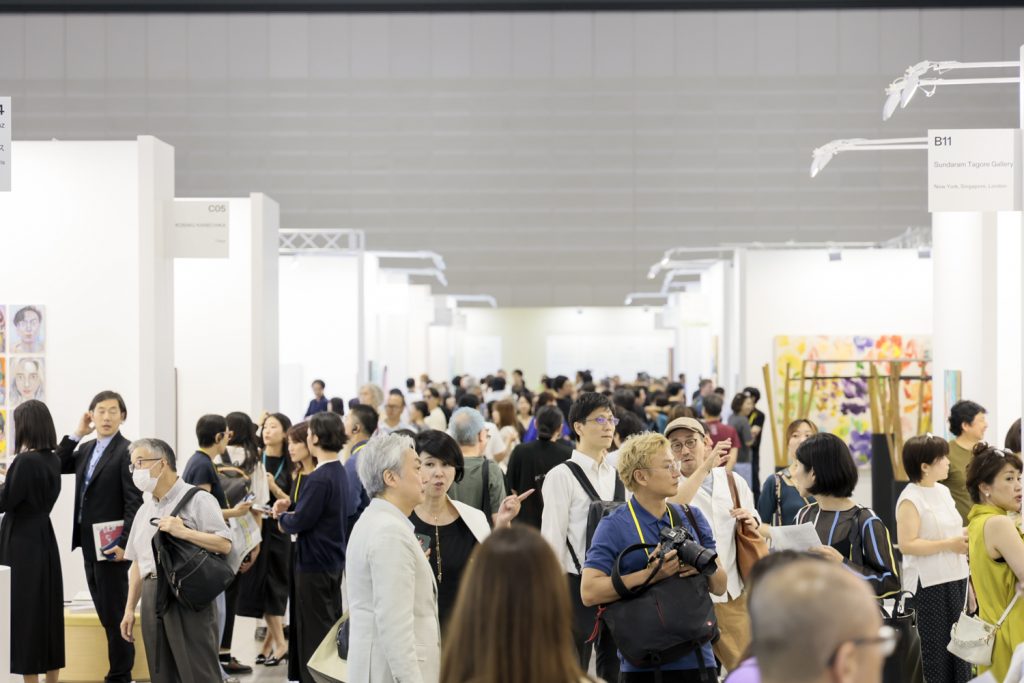
Tokyo Gendai 2024
This year, Renfrew highlighted the addition of two performative installations, injecting some dynamism to the event. Historically, the Japanese art market and fairs have been considered conservative, favoring well-known Western masters and paintings.
The galleries were divided into three sections, with the main gallery section hosting prominent international galleries. Notable new additions included Ceysson & Bénétière, Berlin’s Galerie EIGEN + ART, and Hong Kong’s Gallery EXIT and Kwai Fung Hin Art.
Pace Gallery spotlighted recent large-scale, highly detailed, hyper-realistic charcoal drawings by American artist Robert Longo, with a price range from $90,000 to $750,000. Back in the city, the gallery organized an ambitious presentation in collaboration with Azabudai Hills Gallery, “Calder: Un effet du japonais,” marking the first solo exhibition of Alexander Calder’s work in Tokyo in nearly 35 years, and drawing connections between the American modernist and Japanese aesthetic traditions. They also offered some visitors a special “sneak peak” of its Tokyo gallery ahead of its official grand opening in September.
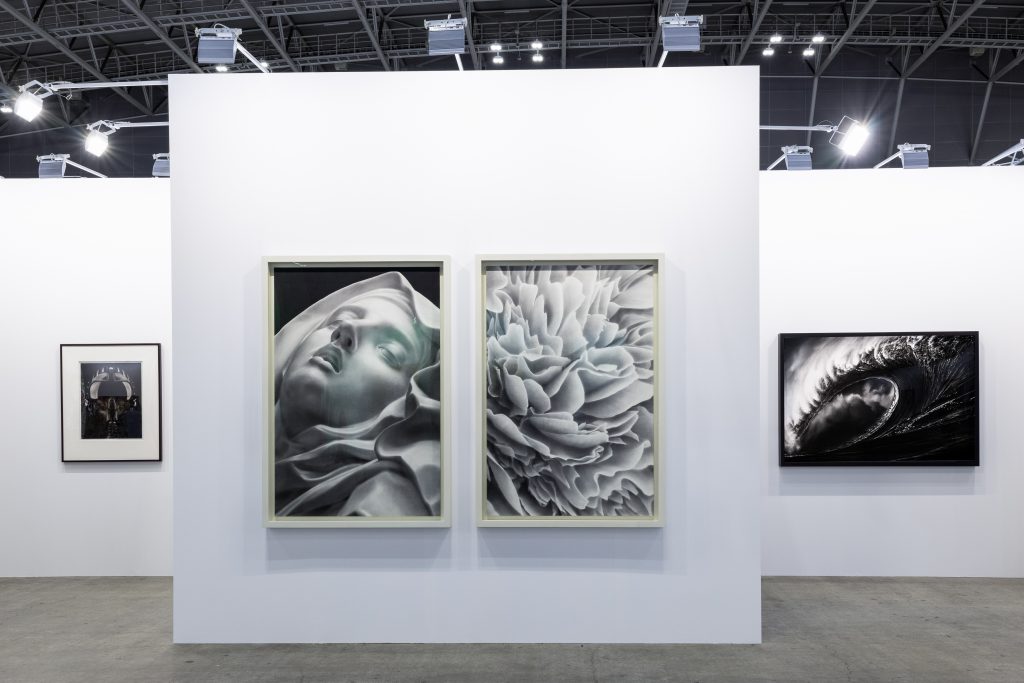
Robert Longo’s large scale drawings at the booth of Pace Gallery at Tokyo Gendai.
“We thought it would be great to bring something so special and so rare,” said Pace Gallery CEO Marc Glimcher, who was present at the booth on the first day. He was pleased that everything quickly sold to Japanese collectors, despite many being unfamiliar with the artist beforehand. “A few buyers had never heard of Robert Longo and were surprised, but they were so amazed by the work,” Glimcher added.
Almine Rech returned for the second year with a group exhibition, featuring works priced from $20,000 to $400,000, the highest being an oil on canvas by Tom Wesselmann, which reflects the gallery’s confidence in the local market. Wesselmann is popular among Japanese collectors, Fanny Meng Yu, the gallery’s Shanghai associate, told me. When selecting works, factors such as “big names, minimalist, and zen” aesthetics, which have Asian influences, are considered. The booth also featured beautiful works by Oliver Beer and Vivian Springford (around $170,000), and quirky paintings by Indonesian artist Roby Dwi Antono of $38,000, attracting considerable interest.
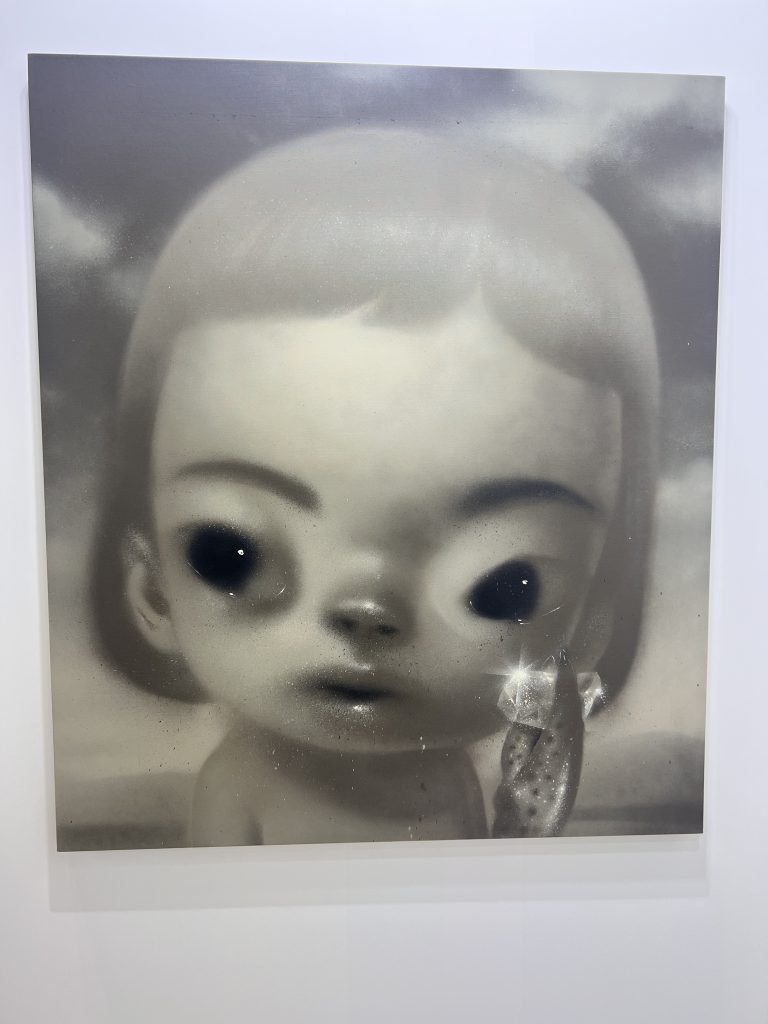
Roby Dwi Antono’s painting at the booth of Almine Rech, Tokyo Gendai 2024. Photo: Cathy Fan
Tim Blum, standing at his Blum gallery booth, noted that while there was good visitor traffic, sales did not follow as quickly. As an observer of the Japanese art market for the past 30 years, he sees great potential, particularly among young new-generation collectors. “But there is still so much work to do,” he said. By the end of the first day, the gallery had made significant sales, including a large painting by Kenjiro Okazaki for $160,000, a painting by Ha Chong-Hyun for $250,000, sculptures by Akane Saijo priced at $2,000-$2,500 each, and Kazunori Hamana pots at $20,000 each. But the gallerist emphasized that the fair needs much more outreach to the regional community in Asia to grow.
The continued weakness of the yen attracted many enthusiastic shoppers, particularly from mainland China. Mandarin-speaking attendees were the most prominent group after local visitors, with many heading straight to the booths of Tang Contemporary Art and Spurs Gallery. Although Magnus Renfrew noted that 80 percent of last year’s attendees were Japanese locals, with the remaining 20 percent mainly from China, Korea, and Taiwan, this year saw an increase in international visitors.
However, for local Japanese dealers, choosing between dollar or yen transactions was a crucial decision. Masami Shiraishi, founder of SCAI The Bathhouse and co-founder of the Nippon International Contemporary Art Fair 30 years ago, pointed out that booth fees settled in dollars are costly for Japanese dealers, yet his booth featured works by Japanese artist Daisuke Ohba priced in dollars, ranging from $7,800 to $24,000. On the other hand, some Japanese galleries, such as Taka Ishii Gallery, preferred yen transactions for “the convenience of local collectors.”
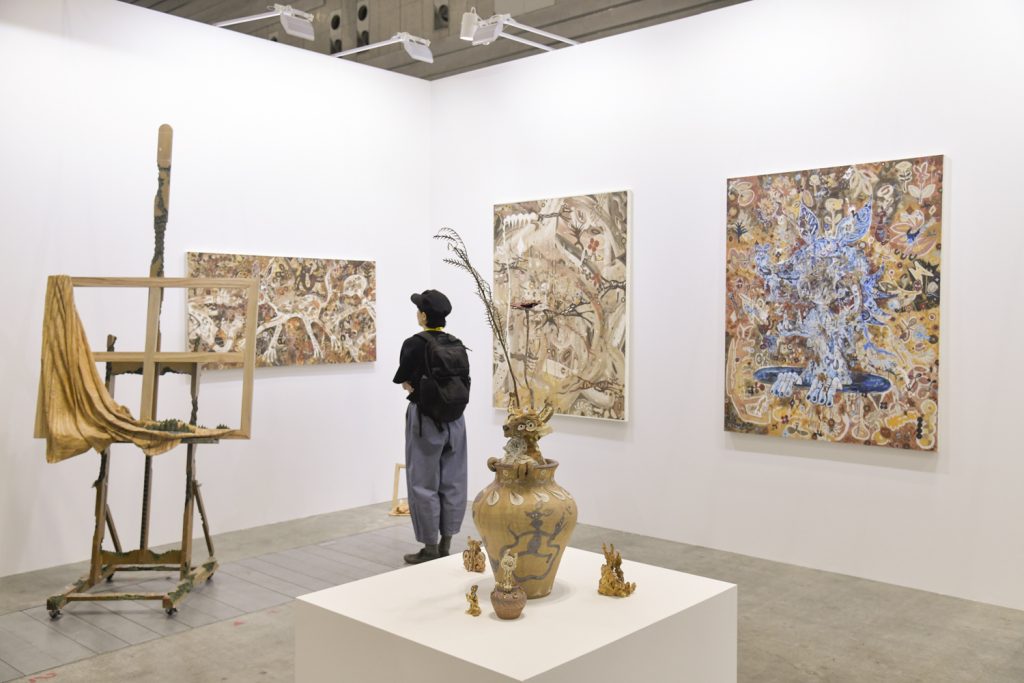
Booth of ANOMALY at Tokyo Gendai showing works by artists Yusuke Asai and Keisuke Tanaka, Tokyo Gendai, 2024
Reiri Kojima, the fair’s general manager, mentioned that the organizers collaborated with the Japanese government to leverage the country’s travel and culinary appeal to attract more “high net worth” visitors this year, aligning with Japan’s tourism policies in recent years.
The strategy seems to be working. At Artnet’s dinner at the Tokyo Edition hotel, Hong Kong based collector Sylvia Wang told me that she planned her visit originally as a relaxing family trip, and then decided to extend it to attend more art events in Japan.
“Tokyo’s art market is blooming again in recent years, the appearance of Tokyo Gendai is at the right timing, which also enhances the development of Art Week Tokyo,” Wang said. As a museum patron herself, she has been gallery and museum hopping, and looking forward to a trip to the spellbinding Enoura Observatory and the Echigo-Tsumari Art Triennial, which opens on July 13.
Tokyo Gendai will continue to run through July 7 2024. More insights on Japan art market will be in the upcoming The Asia Pivot on July 10.